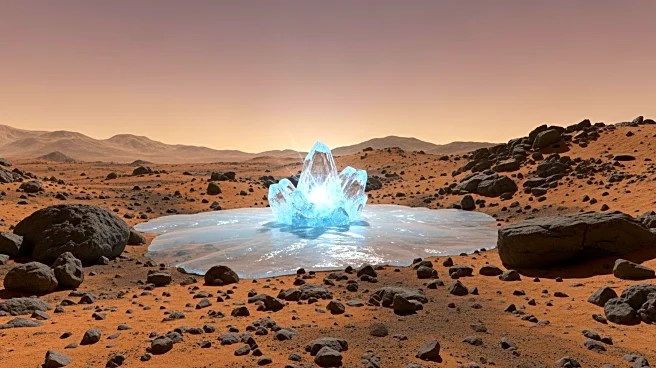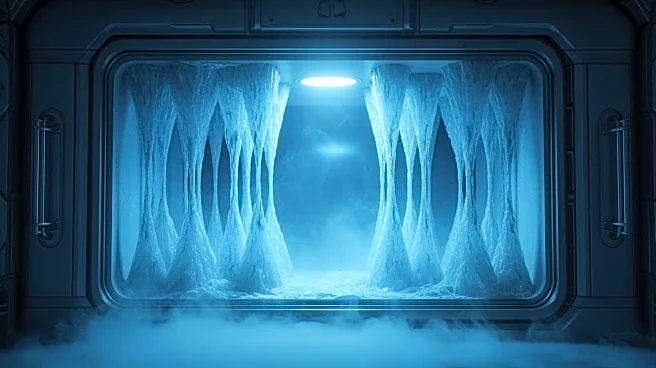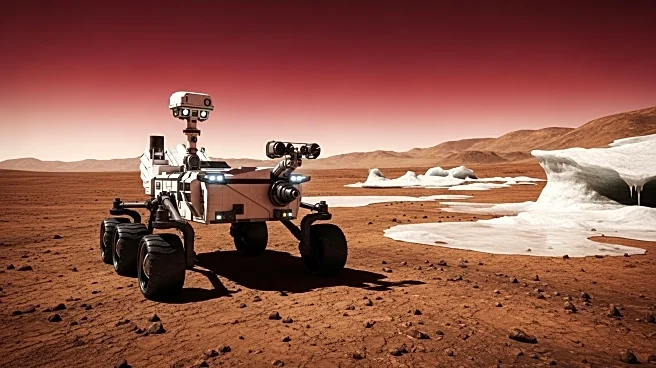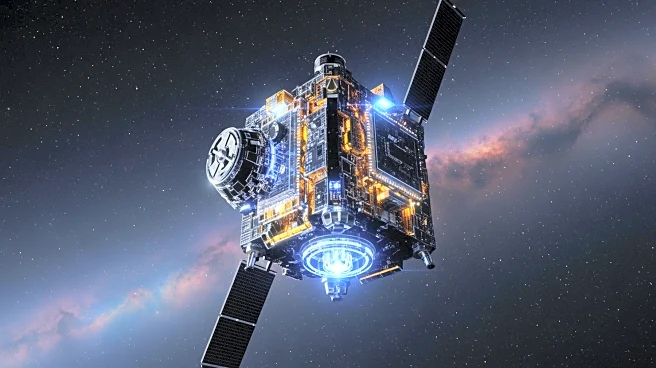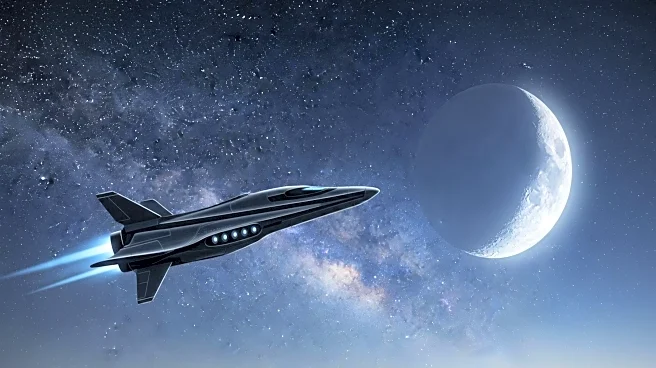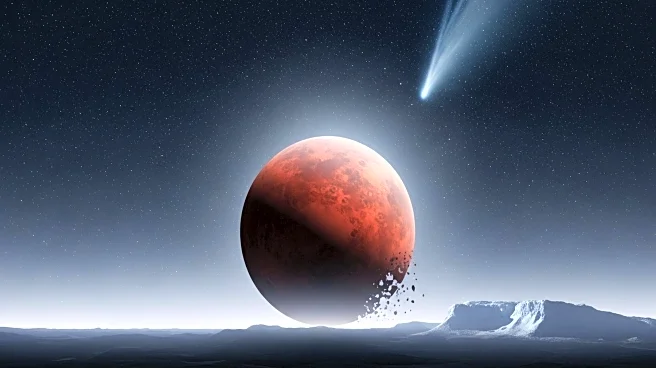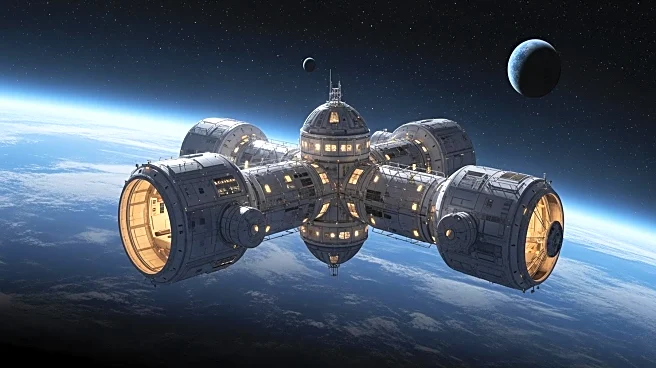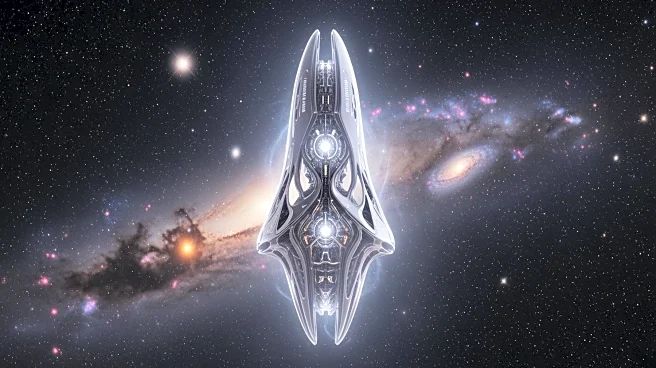What's Happening?
A study conducted by NASA and Penn State University suggests that biomolecules from ancient microbes could survive in Martian ice for tens of millions of years. The research involved freezing samples of E.
coli bacteria in conditions simulating Mars' environment, revealing that biomolecules could withstand harsh radiation for extended periods. The study indicates that pure ice or ice-dominated regions on Mars are ideal for preserving biological material, offering promising targets for future missions seeking evidence of past life on the planet.
Why It's Important?
The findings are crucial for astrobiology and the search for life beyond Earth. If biomolecules can survive in Martian ice, it increases the likelihood that future missions could discover evidence of past life on Mars. This research also informs the selection of landing sites and the design of tools for upcoming Mars missions, potentially guiding efforts to drill into subsurface ice deposits. The study underscores the importance of exploring icy regions on Mars, which may hold clues to the planet's habitability and the history of life in the solar system.
What's Next?
Future Mars missions will likely focus on regions with subsurface ice, as these areas may contain preserved biomolecular traces from a more recent habitable period. The study's results will help refine mission planning and the development of technologies for detecting and analyzing biological material on Mars. As research continues, scientists will explore other cold environments in the solar system, such as the icy moons of Jupiter and Saturn, to further understand the potential for life in extreme conditions.
